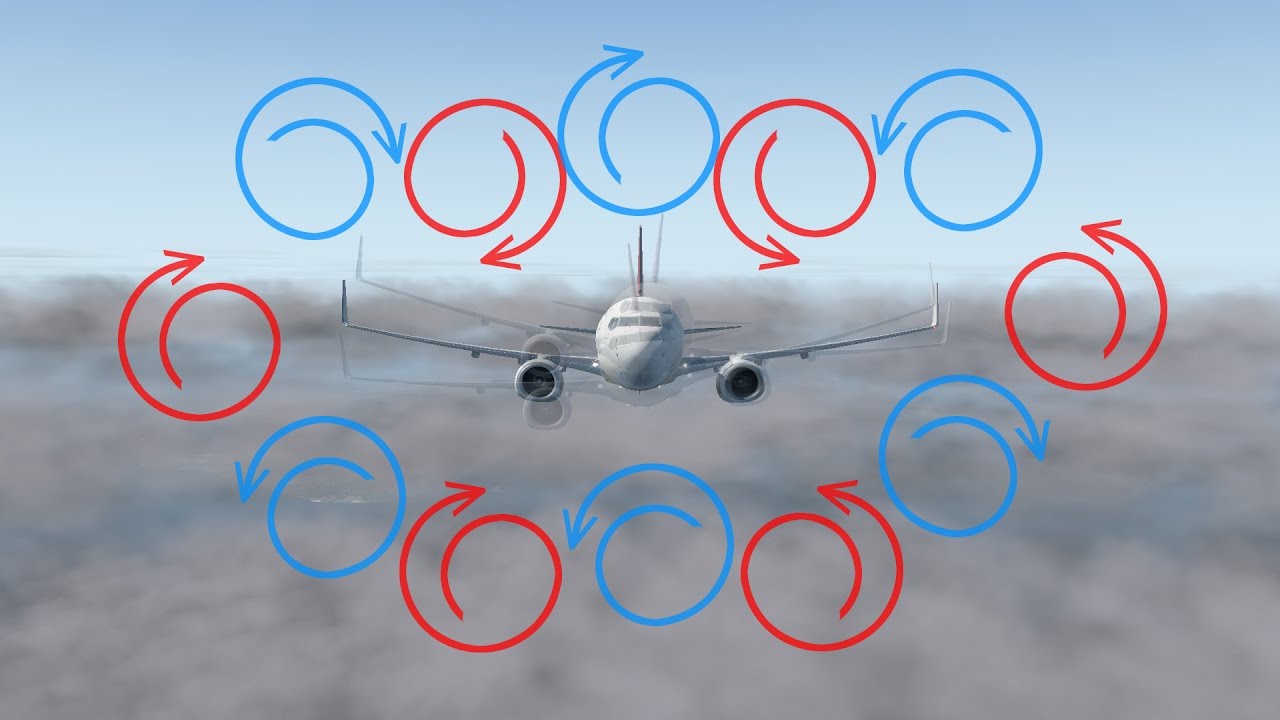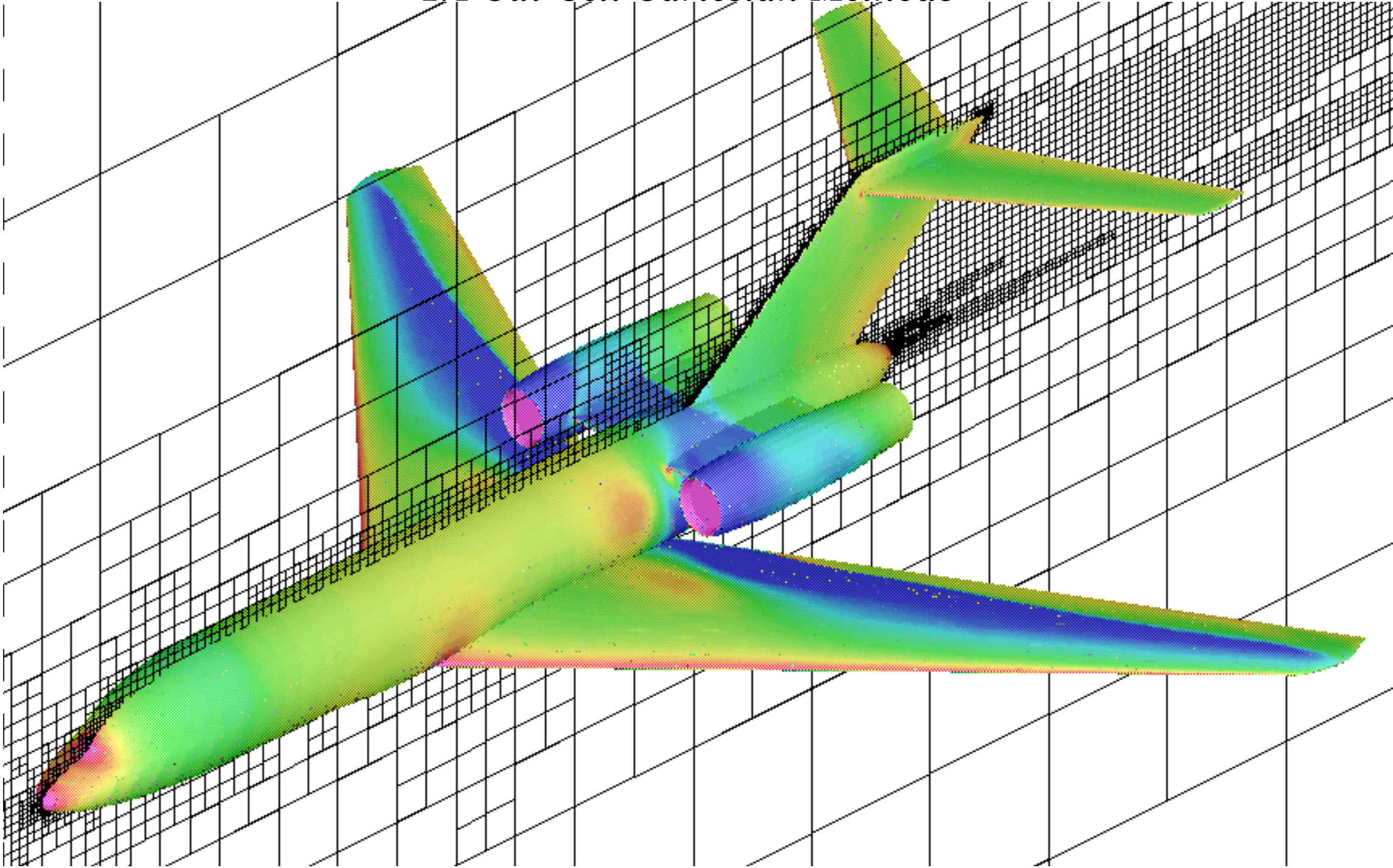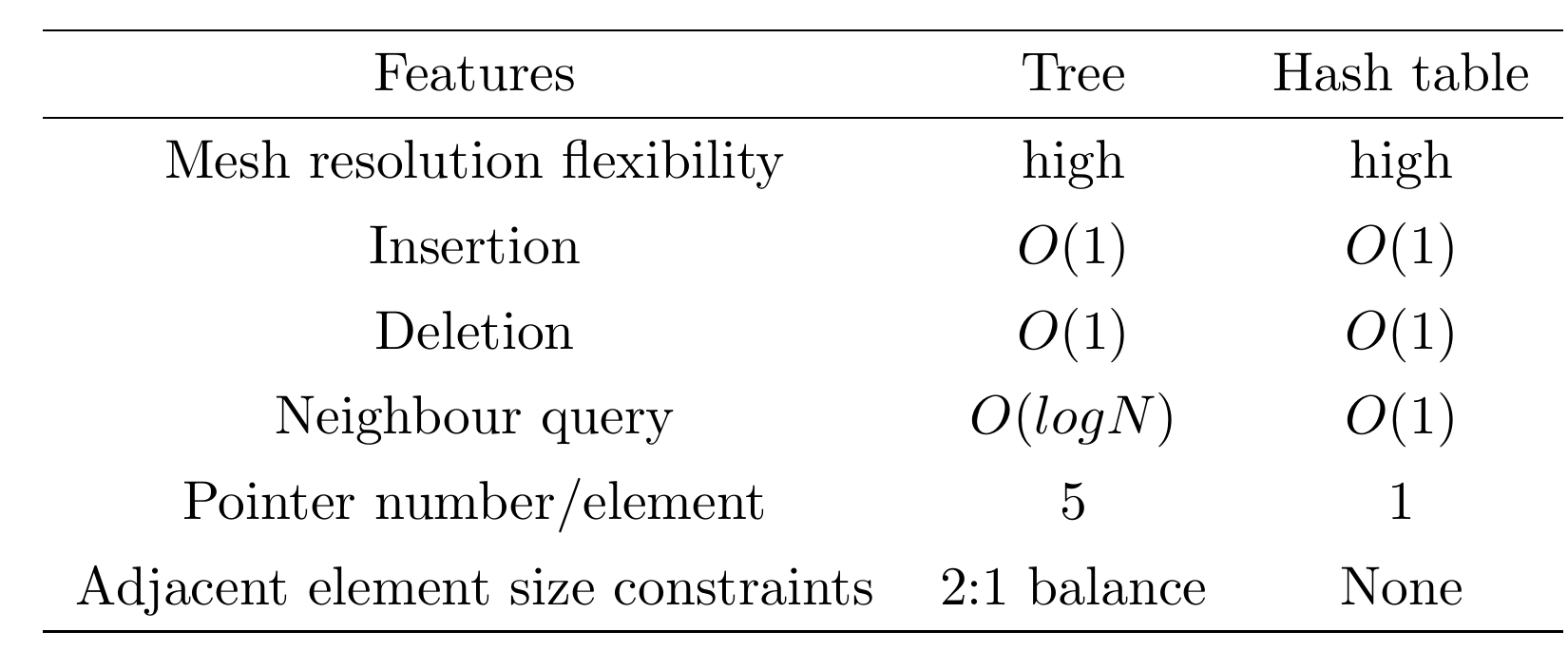Motivation¶

Turbulent flow around an airplane.¶
Scientists and engineers want to study complex fluid flow, e.g., turbulence, which can help them to design more fuel-efficient airplane.
To study complex fluid flows, you need a high-order (high accuracy) method to capture the details inside fluid flow. In our work, we use the
discontinuous spetral element method (DG-SEM).
One potent method to fully resolve turbulent flow is to use direct numerical simulation (DNS). However, DNS is very computational expensive: the computational resources required by a DNS would exceed the capacity of the most powerful computers currently available. To save the computational cost we only bring high resolution to the computational difficult regions to the mesh:
parallel adaptive mesh refinement (AMR) is appltied to our solver.

AMR example:iosbars and mesh cut on a business jet configuration computed with AMR approach.¶
However, parallel AMR imposed a huge challange on data encoding and managing. We propose to use hash table data structure for AMR data management to supplant traditional tree-structured AMR.

Tree-structured AMR and hash table AMR features comparison.¶
Another challange is caused by the adptivity of the solver. Dynamic mesh introduces load imbalance among the processors: processors with heavier workload need more time to performs computation than the ones with less workload. Load imbalance can largely degrade the performance of supercomputers. To tackle this problem, a space-filling curve (SFC) based repartitioning algorithm is applied to redistribute the workload among processors evenly and periodicially. The SFC we choose is called Hilbert curve.

The Hilbert curve traverses the mesh with mixing levels.¶